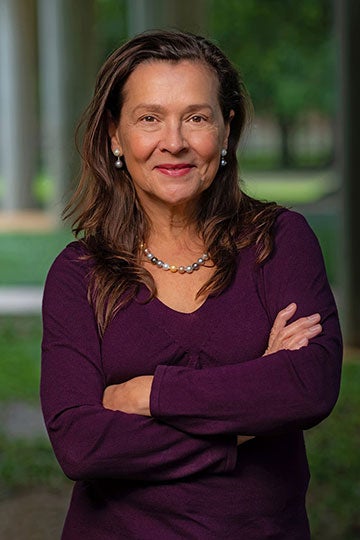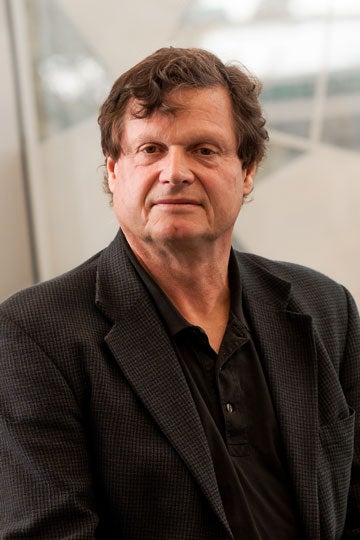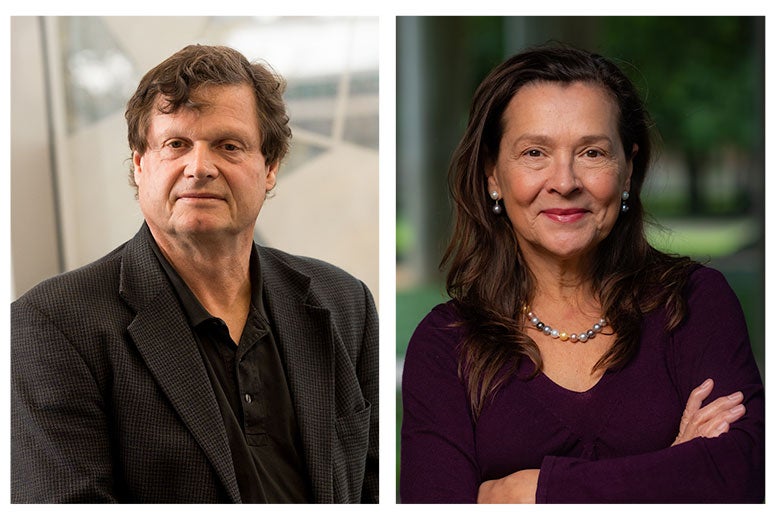HOUSTON – (Aug. 8, 2022) – Rice University professors Naomi Halas and Peter Nordlander have won the prestigious 2022 Eni Energy Transition Award for developing light-powered “antenna-reactor” catalysts that can substantially lower the temperatures required for industrial-scale hydrogen production.

Sponsored by Eni, a global multibillion-dollar energy company headquartered in Rome, the Eni Awards are premier honors for scientific research in energy and the environment. The Energy Transition Award, one of three main Eni Award prizes, recognizes the best innovations for decarbonizing the world’s energy system and includes a gold medal and cash award of 200,000 Euros.
Halas, a chemist, physicist and engineer, and Nordlander, a theoretical and computational physicist, were recognized for leading the development of commercially viable light-activated nanoparticle catalysts that can insert energy into chemical reactions with surgical precision.
Catalysts are materials that speed up chemical reactions, and they are used in the manufacture of most commercial chemicals. Industrial catalysts typically work best at high temperature or high pressure or both, which means they come with an enormous energy burden. For example, the U.S. Energy Information Agency estimated that in just one year, 2010, a single segment of the U.S. chemical industry, plastic resin production, consumed energy equivalent to burning 8 billion gallons of gasoline.
Antenna-reactor nanocatalysts drive chemical reactions with energy from light rather than heat. This results in record-high efficiencies for chemical reactions. While this had been proven in laboratory tests on particles made of expensive metals like gold and palladium, Halas’ and Nordlander’s research groups spent years driving down the cost of the technology by developing techniques to make the catalysts from materials like aluminum and copper. Their invention has been licensed by Syzygy Plasmonics, a Houston-based startup company with more than 60 employees, which is using antenna-reactor nanocatalysts with LED illumination to make sustainable green hydrogen and other chemicals.

Halas and Nordlander each joined Rice in 1989.
Halas is the Stanley C. Moore Professor of Electrical and Computer Engineering, director of Rice's Smalley-Curl Institute and a professor of chemistry, bioengineering, physics and astronomy, and materials science and nanoengineering. She has pioneered the development of light-activated nanoparticles for applications including cancer treatment, off-grid water treatment, optoelectronics, chemical sensing, and solar-powered distillation and steam production.
She is the first Rice faculty member to be elected to both the National Academy of Sciences and the National Academy of Engineering for research done at Rice. She is a member of the American Academy of Arts and Sciences and a fellow of the National Academy of Inventors, the American Association for the Advancement of Science, the Materials Research Society, the Optical Society, the American Physical Society, the International Society for Optical Engineering and the Institute of Electrical and Electronics Engineers.
Nordlander is the Wiess Chair and Professor of Physics and Astronomy, and professor of electrical and computer engineering, and materials science and nanoengineering. He is one of the world’s leading theoretical experts in nanoparticle plasmonics, and his prediction of plasmon-enhanced hot carrier generation revolutionized the field of photocatalysis and paved the way for sustainable catalysis that makes use of renewable energy.
He is a past director of the Rice Quantum Institute, a fellow of the Optical Society, the American Physical Society, the American Association for the Advancement of Science and the International Society for Optics and Photonics, as well as the recipient of the 2013 Willis E. Lamb Award for Laser Science and Quantum Optics, the 2014 Frank Isakson Prize for Optical effects in Solids and the 2015 R.W. Wood Prize of Optica.
The 2022 Eni Awards will be presented this fall in a ceremony at Rome’s historic Quirinal Palace.
- Image downloads
-
https://news-network.rice.edu/news/files/2022/08/0808_ENI-nh30-lg.jpeg
CAPTION: Rice University’s Naomi Halas is an engineer, chemist, physicist and pioneer in the field of light-activated nanomaterials. (Photo by Jeff Fitlow/Rice University)https://news-network.rice.edu/news/files/2022/08/0808_ENI-pn04-lg.jpg
CAPTION: Rice University’s Peter Nordlander is a theoretical and computational physicist and one of the world’s foremost authorities on theoretical nanoparticle plasmonics. (Photo by Jeff Fitlow/Rice University) - Related stories
-
Shape matters for light-activated nanocatalysts – Sept. 18, 2020
https://news.rice.edu/2020/09/18/shape-matters-for-light-activated-nanocatalysts/Gasification goes green – Jan. 10, 2020
https://news.rice.edu/2020/01/10/gasification-goes-green/Fluorocarbon bonds are no match for light-powered nanocatalyst – June 22, 2020
https://news.rice.edu/news/2020/fluorocarbon-bonds-are-no-match-light-powered-nanocatalystRice U. lab adds porous envelope to aluminum plasmonics - Feb. 8, 2019
https://news.rice.edu/2019/02/08/rice-u-lab-adds-porous-envelope-to-aluminum-plasmonics-2/Light makes Rice U. catalyst more effective - Oct. 4, 2018
http://news.rice.edu/2018/10/04/light-makes-rice-u-catalyst-more-effective-2/Rice’s antenna-reactor catalysts offer best of both worlds - July 18, 2016
https://news2.rice.edu/2016/07/18/rices-antenna-reactor-catalysts-offer-best-of-both-worlds/ - About Rice
-
Located on a 300-acre forested campus in Houston, Rice University is consistently ranked among the nation’s top 20 universities by U.S. News & World Report. Rice has highly respected schools of Architecture, Business, Continuing Studies, Engineering, Humanities, Music, Natural Sciences and Social Sciences and is home to the Baker Institute for Public Policy. With 4,240 undergraduates and 3,972 graduate students, Rice’s undergraduate student-to-faculty ratio is just under 6-to-1. Its residential college system builds close-knit communities and lifelong friendships, just one reason why Rice is ranked No. 1 for lots of race/class interaction and No. 1 for quality of life by the Princeton Review. Rice is also rated as a best value among private universities by Kiplinger’s Personal Finance.

